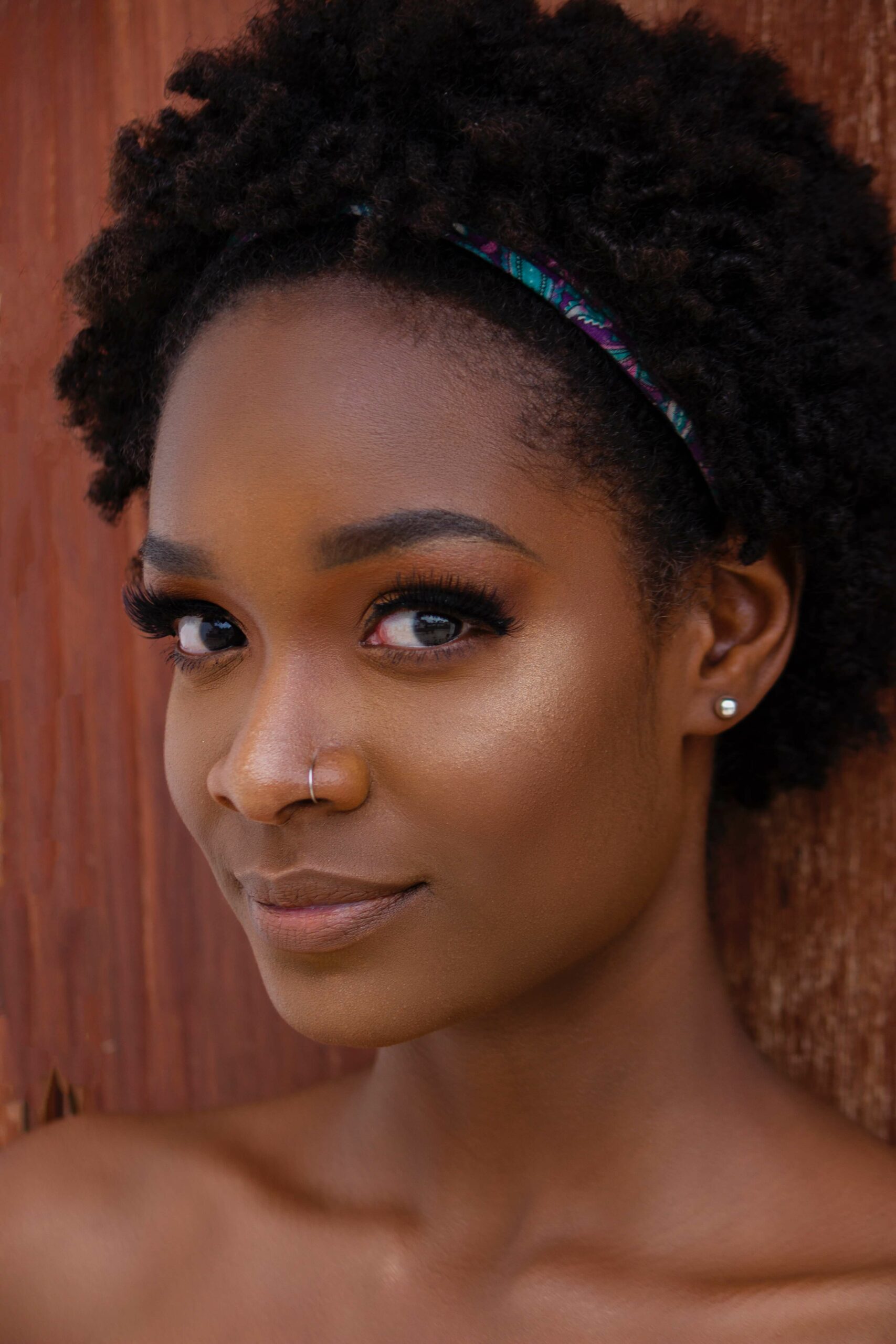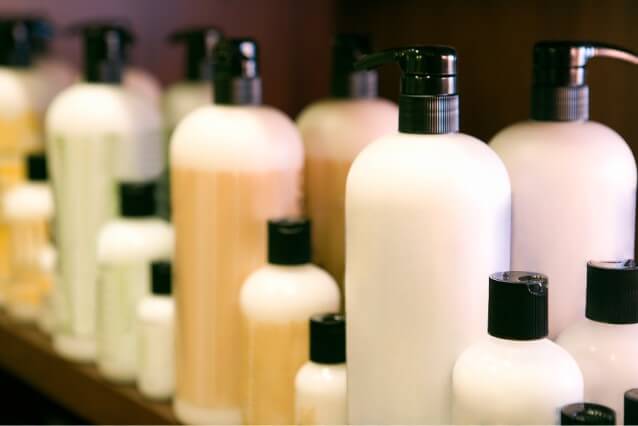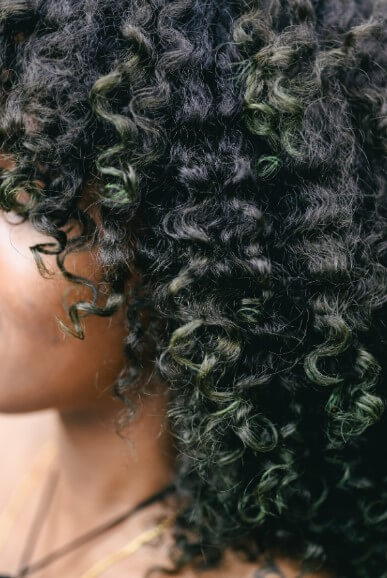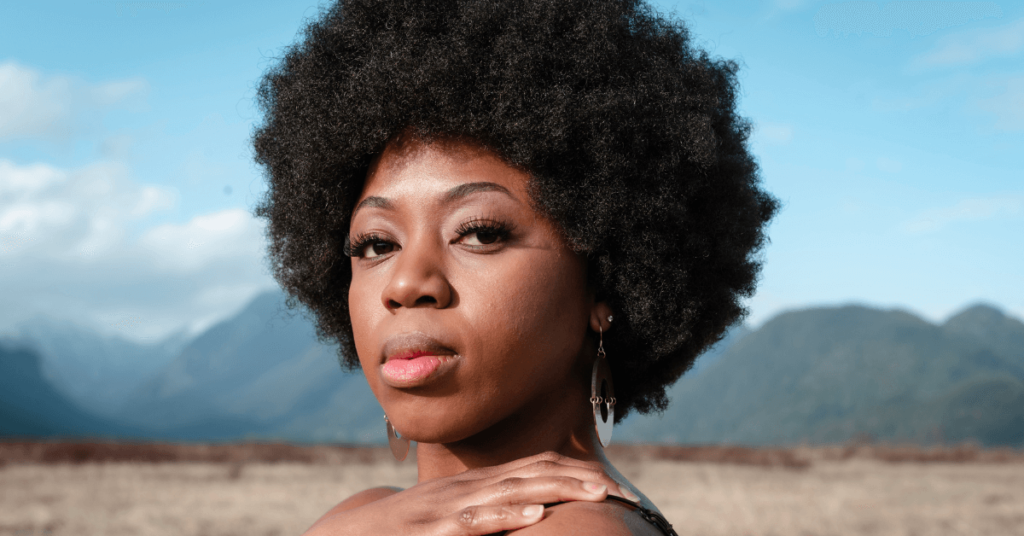Do you have 4c hair or know someone with this particular texture? 4c curls could be the most challenging to care for. Natural hair is so beautiful, but there is a lot of misunderstanding about its upkeep.
In other words, most people think natural hair is easy to maintain, but it’s NOT! Thankfully, so many resources today teach us how caring for our coils. Are you interested to learn how to take care of 4c hair?
Then read on because you’re in the right place!
Quick Question: Are you frustrated or tired of not knowing how to properly take care of your natural hair? Join our email list where we provide the best tips, tricks, and product suggestions for your kinks, coils, and curls so you can wear them confidently!
This post contains affiliate links, which means I may receive a small commission, at no cost to you, if you make a purchase through a link.
How to Take Care of 4c Hair
What is 4c hair?

Before I can discuss how to take care of this curly texture, I must first tell you what it is. Pictured above is what the 4c hair looks like. 4c hair refers to a specific hair type classified on a hair texture chart created by hairstylist Andre Walker.
4c hair is tight, “Z” pattern curls. In fact, it is the tightest curl pattern of them all, appearing on the end of the hair texture spectrum. 4c texture can range from fine to coarse density and these coils produce the most shrinkage.
Not sure what natural hair shrinkage is? No worries! I have written an entire article about shrinkage that you can find here. Now that we are familiar with what 4c hair is, let’s get into more details about how caring for it!
Know Your Hair’s Porosity

Learning your hair’s porosity should be the number one step taken to manage your curls. There are three different types of porosity: low, medium, and high. If you’d like to learn more about hair porosity, please refer to this post.
Porosity is highly important to know because it helps to determine what hair products you should use. 4c hair could be any of the three porosities, but low seems to be the most common with type 4 curls.
Moisture is Your Friend

Most type 4 hair is prone to dryness, but 4c takes the number one spot. The hair is dry because the natural oil of the scalp does not reach the coily hair strands. In fact, the tight 4c coils prevent sebum from being distributed throughout the hair.
This is where proper moisture balance is needed. To get moisture into 4c hair, be sure to rinse curls at a hot but comfortable temperature during wash day. Hot water opens up the hair cuticles, which gives moisture an opportunity to get in and do its job.
Make sure that the hair is soaking wet before washing it with shampoo. I usually start washing once I can see my curly texture popping. That lets me know that my hair is fully hydrated once I can see popping curls. Aim for moisturizing shampoos, deep conditioners, leave-in conditioners, and hydrating-style products.
Use Protein As Needed

Your hair’s porosity would determine how much protein your 4c coils need for optimal health. Some type 4 hair is sensitive to protein, but this does not mean eliminating it from your regimen. If you find that your hair cannot handle a lot of protein, then use a light treatment as needed.
If your hair craves protein, then be sure to incorporate it regularly into your wash day sessions. An excellent way to add protein to the hair is through deep conditioners. Some great options are Shea Moisture’s Manuka Honey and Mafura Oil Intensive Hydration Hair Masque and Profectiv’s Mega Growth Anti-Breakage Deep Conditioner. The Shea Moisture hair masque treatment has almost a 5 star rating on Amazon.
That’s how excellent it is! One tip to know about purchasing products that contain protein is to look for “Strengthening,” “Masque”, or “Mask” in the name.
Choose the Right Products

Don’t be out here just grabbing any and everything like this👆🏾! When I was learning to take care of my hair, I would just follow my favorite Youtuber’s routine. That did not work thoroughly for me because everyone’s hair is different. Just because someone you see online or in person may have a similar texture, doesn’t mean that what they use for their hair will work for yours.
Again, porosity plays a key factor in the types of products that you should use in your hair routine. Density and various textures throughout the head also contribute to proper product choices. The bottom line is, get to know YOUR hair!
You may have some hits or misses with product choices, especially if you are just getting to know your hair. That’s why it’s very important to keep track of each wash day session.
I wash my hair every two weeks and I record all products used/routines in this journal! On my off week, I moisturize and restyle my hair to make it last until the next wash.
Be Gentle with the Detangling Process

I am type 4, but I am a mainly 4b with a touch of 4c. I know the plight of detangling type 4 hair and I find it easier to manage during pre-pooing. Currently, I use Cantu Avocado Hydrating Silicone-Free Conditioner as a pre-poo.
It works wonders for me! If you do not pre-poo, then it would be best to detangle while applying deep conditioner. Don’t pre-poo or deep condition? Well, you’d better start one or both if you want thriving hair!
4c hair is so fragile that you should always apply your pre-poo or deep conditioner first. Next, use your fingers to detangle your hair. Then use a wide tooth comb. It’s also helpful to start detangling at the ends of the hair and work up to the roots.
Use a spray bottle with warm water for slip so that the comb could easily glide through the curls. Detangling curls on wet hair reduces snapping, breakage, and knots. It is also extremely important to detangle in sections.
Style with Care

Whatever hairstyle(s) you decide to wear for your 4c coils, make sure that you choose wisely. Try low-manipulation styles such as two-strand twists, twist-outs, a puff, or a sleek bun. There are many more styles to choose from, but these are low manipulation as well as low maintenance.
Box braids would be another ideal hairstyle to consider, but be mindful that braids tend to be heavy depending on the length and fullness. Box braids could also put tension on your hair and scalp – especially the edges. If box braids are installed on freshly washed, blown-out hair without a lot of pulling and tightness then all should be well!
For added protection, make sure to give your hair a protein treatment prior to getting box braids. If you use heat to blow out your hair, be sure to use a leave-in conditioner as well as a trusted heat protectant. I rarely use heat in my hair care regimen, but when I blow out my hair, I use Brigeo’s Farewell Frizz Blow Dry Perfection and Heat Protectant Creme. The heat protectant name says it all, pure perfection 👍🏾.
So, there you have it!

Are you ready for soft, manageable, and healthy 4c curls? I would love to help you along the way! Make sure to join our email list for more tips on maintaining healthy natural hair, style inspiration, and more! Become a part of the community! Subscribe here.
You Might Also Like:
